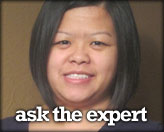Mary Thao, CMP, is Director of Events at ACA International where she oversees logistics for events. Prior to joining ACA in 2006, she planned events at an association management company. Mary earned her Bachelor of Science in Hotel, Restaurant and Tourism Management in 2004 from the University of Wisconsin-Stout, with special studies in meeting and conference planning. She is also a member of Meeting Professionals International (MPI) and the International Association of Exhibits and Events (IAEE).
Long-distance Planning
While cell phones, e-mail and Skype have enabled us to communicate instantly with people on the other side of the globe, there’s still nothing that compares with meeting people face to face. Unless it’s not an option. Quite often these days, time or budget constraints don’t allow for planners to make preliminary site visits, inspect venues, or meet with on-site event coordinators. Mary Thao, CMP and Manager of Meetings + Expo at ACA International knows first-hand how that goes. That’s why she’s established some noteworthy ways to effectively address what can be a planner’s most challenging (and stressful) assignment — long-distance planning.
Q. Tell me briefly about yourself and ACA International.
A. ACA International (The Association of Credit and Collection Professionals) serves more than 5,000 members worldwide, including third-party collection agencies, asset buyers, attorneys, creditors and vendor affiliates. We are the comprehensive resource to the credit and collection industry in many areas, such as ethical standards, products, services and education. I have planned both large and small events for ACA for the past six years. The smaller meetings are more local meetings where we might bring in executives and board members, or invitation-only meetings for specific members. The large meetings are our annual events that could be anywhere from 300 to 1,600 attendees. We have several individuals who work together on each event. As Manager of Meetings + Expo, I touch every part of the meeting planning process including on-site logistics, marketing, budgeting, food and beverage, AV, special events, registration processes, sponsorships, exhibit management and more.
Q. Describe the best way to handle planning a long-distance event.
A. Long-distance planning -- for which the meeting planner is not able to do a pre-event visit or even attend the event itself -- requires good communication with the convention services manager (CSM) at the hotel or venue. The six to twelve months prior to the event is critical for getting to know the hotel staff — seeing how quickly they respond to me, building a trusting, professional relationship and letting them know my expectations. The way they respond to me via e-mail and phone will likely transfer over to the way they‘ll respond on-site when I’m not there. The CSM and hotel staff don’t replace me as a meeting planner, but I can plan better if I have a good working relationship with the individuals who will essentially help me serve my role from a distance.
Q. Give a specific example of a long-distance event you planned. How did you handle everything?
A. Currently, I’m working on an event that will take place in Hawaii in February. This is an event that happens at a different location each year. Last year it was in Key Largo. It is an invite-only meeting of Presidents, CEOs and high-level executives, so service standards and logistics have to be top notch -- every detail has to be perfect.
As I mentioned, communication is critical with this type of event. It’s important to maintain constant contact with the hotel staff.
Requesting photos and floor plans of the meeting space, if they’re available, is also helpful in long-distance planning. It helps me envision the space and anticipate any capacity or logistical issues, such as whether or not the breakfast buffet is going to fit in the room. Long-distance planners should also ask very specific questions. For example, if the built-in sound system in the meeting room is sufficient for a group your size, or what other groups commonly do in that space. During a site visit, a planner would normally have the opportunity to hear what the system sounds like, but in long-distance planning, a planner will need to determine whether or not they’ll need to rent a sound system. You don’t want to wait until the introduction of the first speaker to learn that you should have done so.
In my opinion, after communication, the pre-conference meeting with the hotel is critical to the success of the event. At minimum, I like to make sure this meeting includes my CSM, my contact person for hotel rooms and a banquet manager if necessary. I can send as many detailed notes as I want, but in the end, this meeting tells me how the hotel has interpreted my notes. If needed, I call my CSM each morning of the event as well. Ultimately, I want to streamline the event logistics as much as possible for our staff who do attend the event.
Q. How do you handle it if things don’t go according to plan?
A. Sometimes, despite our best efforts, things do go wrong. We have a meeting planner who recently worked on a very important board meeting for our association. Knowing the caliber of the event, no detail was missed and it should have gone off without a hitch. However, on the first day, the hotel didn’t set out the lunch, even though there was a banquet event order for it. Fortunately, the group was very small for this particular lunch and the hotel was able to correct the situation immediately with room service. In these situations, you have to get on the phone with your CSM, find out what happened and reiterate details with them again, if needed.
Q. What tips/advice would you give to planners who are considering planning a meeting or event at which all the details are arranged and completed off-site and long distance?
A. Be prepared for differing time zones. Sometimes that means sleeping with your cell phone beside you in the event of an emergency. Make sure the hotel staff and your staff have all your contact numbers – cell, home and office – so they can get a hold of you any time, day or night, if the need arises. For example, the closing banquet in Hawaii will be from 7:00 p.m. to 10:00 p.m. their time, but it will be 12:00 a.m. to 3:00 a.m. in Minnesota. Nevertheless, I need to be available in case problems arise.
It’s important to think ahead because you are the one who knows your event and your attendees the best. Anticipate issues and communicate with your CSM and any staff from your company who may be attending. In many ways, they will be performing some of the same tasks that you would if you were on-site at the event, so they’re standing in for you. If you are transferring on-site duties to other staff members, you have to remember that they are probably there to serve a different function. Serving the role of meeting planner is not going to be their top priority so streamline as much as possible. Give them a summary of the event details including any important notes, such as names of individuals who requested special meals.










